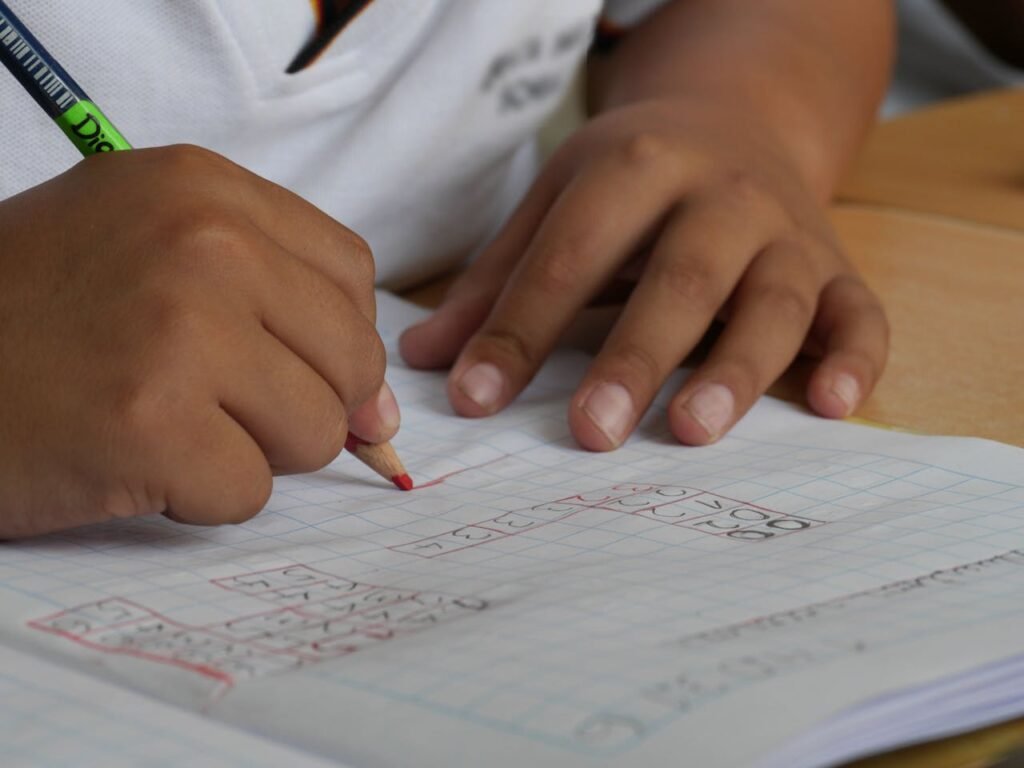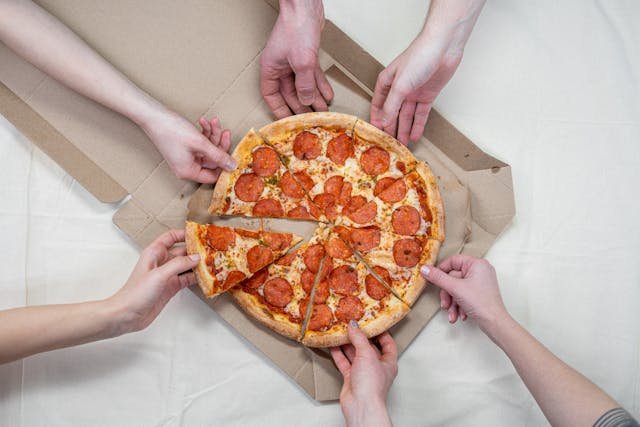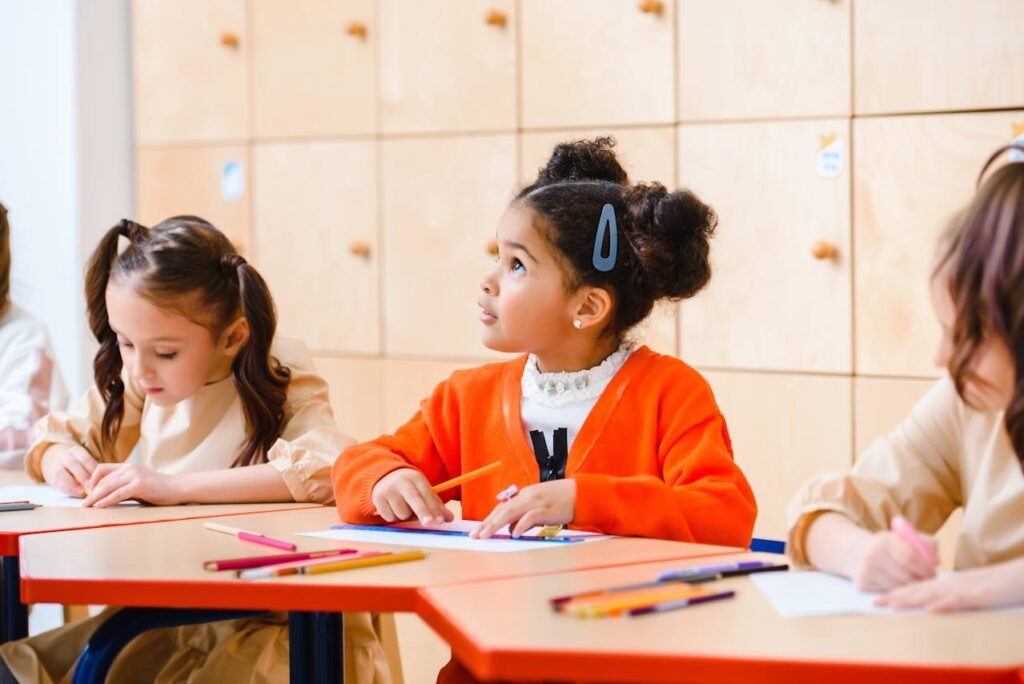Most young children start learning addition by counting on their fingers—and that’s okay at first. Fingers are always there, and they feel safe. But as numbers get bigger, fingers run out. Suddenly, math feels harder. Slower. Less fun.
That’s where the trouble often begins.
At Debsie, we believe that kids don’t struggle with math because they’re bad at it. They struggle because they haven’t been shown how to do it in a way that makes sense to them. And learning to add without fingers is a huge step toward becoming a confident, clear-thinking problem solver.
But here’s the trick: we don’t take the fingers away and replace them with drills. We replace them with games. With play. With movement. With pictures. With little stories that bring numbers to life.
Why Add Without Fingers?
Using fingers to count is very normal for young learners. It’s a starting point. But over time, kids need to think in numbers, not just count with their hands. When they can add without fingers, their brain builds stronger habits that help with bigger math ideas.
The problem isn’t fingers themselves—it’s what happens if kids only use fingers. They learn to rely on counting rather than truly understanding how numbers work. And that can slow them down later, once numbers grow bigger.
So the goal is simple: help children shift from counting on fingers to thinking of numbers in clever ways. But here’s the key: don’t take the fingers away. Instead, give kids something better—something that feels like a game.
Strategy 1: Use Number Stories
The first step is to turn addition into a little story. Here’s how it works:
Imagine you have 3 red blocks, and you find 2 blue ones beside them. How many blocks are there in total? You can show this with a quick drawing, or even act it out with cubes. When you move the pieces together, you’re no longer counting on fingers—you’re making a story with objects that show how addition joins groups.
This works like a bridge between fingers and clear thinking. Instead of thinking “1‑2‑3, 4‑5,” the brain starts seeing “3 plus 2 means 5.” No finger needed.
At Debsie, we guide learners to tell their own number story using toys, drawings, or even snacks. This storytelling builds a mental picture of numbers being combined. Over time, kids form a mental image of addition—so they don’t need to count fingers anymore.
Strategy 2: Try Quick Dot Cards

Next, we use dot cards—small cards showing groups of dots. For instance, one card might show 4 dots, the next shows 3 dots. Present two cards, ask “What’s 4 plus 3?” The child doesn’t count on fingers. They look at two groups and quickly say “7.”
At first, it might feel slow. But with just a few rounds, kids begin to see the total, rather than count each dot. Their brain learns to recognize “4 and 3 is 7” instantly.
To make this work, start with small numbers—dots between 1 and 5. Let children say the answer and even say something like, “I see 4 here and 3 there, that makes 7.” Celebrate the quick answer! You can mix up the dot cards too—sometimes big group then small, sometimes split dots into row patterns. Different visuals help the child’s mind build flexible ways to see addition.
These quick dot cards train the brain to move from counting fingers to recognizing totals by sight. And when kids can do that, they begin adding with speed and confidence.
Strategy 3: Play “Partner Pairs”
This next method is great: use small tokens, coins, or counters to create partner pairs on a board. Place a few on the left side—say, 2 counters—and a few on the right side—say, 3 counters. Now ask, “How many do we have altogether?”
They push both groups together and get the total. Then you swap—maybe 5 on the left, 4 on the right—and ask again. With each round, kids start seeing that putting groups together makes a new number. They don’t have to count on fingers—they see counters join into one pile.
As they get comfortable, you can add variation: spread out the tokens to form shapes, or use different colors to represent groups and totals. You can also time them—“Can you do it without counting?”
That sense of speed and play builds mental math skills. Children stop thinking of fingers and start to think in groups and totals.
Strategy 4: Roll-and-Add Dice Games
This one’s a favorite for many kids because it feels just like playtime.
Grab two dice. Roll them together. Whatever numbers show up, ask your child to add them. For example, if you roll a 2 and a 5, they answer “7.” Simple—but powerful.
Now here’s where the real magic happens: after just a few rounds, your child begins to recognize sums without counting. They remember that “2 and 5 always makes 7” or “3 and 4 is always 7.” Their brain starts building automatic recall—what we call number facts.
To keep it fun, add small twists:
- Give them a board with squares numbered 2 to 12. Every time they roll and get a total, they can color that square.
- Play “race to 20.” Every roll adds up to their total score. First one to 20 wins—but they have to add each new number quickly to their score.
At Debsie, we build these kinds of dice-based games into early math lessons because they train memory without pressure. There’s no scolding. Just a game. And when the brain feels relaxed, it learns better.
Strategy 5: Use Ten Frames With a Twist

Ten frames are a very simple tool—just a rectangle divided into 10 little boxes. You fill the boxes with tokens to show numbers.
Let’s say your child sees 6 red dots in a ten frame. You ask, “How many more do we need to make 10?”
They count and say “4!” Now they’ve just solved 6 + 4 = 10 without even writing it down.
This method is excellent for teaching combinations of 10, which is a big part of fast addition. If a child knows that 7 and 3 make 10, they’ll be quicker to solve 7 + 2, or 7 + 4, because their brain builds from what it knows.
To keep it playful, try these tricks:
- Use small foods like raisins or cereal pieces instead of tokens. (Yes, they can eat the answer!)
- Turn it into a race: “Can you fill the frame to 10 in under 10 seconds?”
- Ask backwards: “I filled 8 boxes. How many are still empty?”
We use this “ten-frame twist” at Debsie to help young children build mental images of numbers. It helps them move past fingers—and straight into thinking in groups.
Strategy 6: Jump It on a Number Line
Another finger-free way to add is to jump along a number line. You draw a line from 0 to 20 (or higher), and ask your child to solve something like 5 + 3.
Start at 5 on the line. Then do 3 jumps forward. Where do you land? 8!
This method helps children understand that addition means “moving forward.” And because it’s visual, they don’t have to count fingers—they can see the movement and result.
Over time, kids even picture the number line in their mind. That’s when real mental math starts to grow.
Strategy 7: Make It a Memory Match
One fun way to build addition fluency is to turn it into a memory game.
Create simple cards: one set shows addition problems (like 2 + 4), and the other set shows answers (like 6). Mix them up and place them face down. Then play like a regular memory game—flip two cards at a time, looking for the right match.
If a child flips “2 + 4” and then finds “6,” it’s a match. If not, turn the cards back over and try again.
At first, kids will need time to work it out. But soon, they’ll start to remember the pairs without counting. It becomes a game of recall—not counting, not fingers.
We play this often at Debsie in group sessions and one-on-one. It’s gentle, competitive, and builds fluency without stress. Kids feel smart when they remember a match—and confidence is the most important part of early math.
Want to level up the game? Add silly challenges:
- Say the answer in a robot voice
- Do a happy dance when you get a match
- Time the round and beat your score next time
These little moments of joy create strong memories—and math that sticks.
Strategy 8: Play “Find the Missing Number”

Here’s another game that boosts mental math without ever needing fingers.
Write simple addition problems but leave out one number:
- __ + 4 = 9
- 6 + __ = 10
- __ + __ = 7
Now invite your child to “be the number detective.” They have to figure out what’s missing.
At first, they may need counters or blocks. But soon, they start using logic. They start asking themselves:
- “What goes with 4 to make 9?”
- “How many more do I need to get to 10?”
This thinking is powerful. It builds number sense—the ability to feel what numbers do, how they relate, and how to move between them.
At Debsie, we make this game part of early mental math warmups. We change the missing part. We flip it around. We even make it silly:
“Someone stole one of my numbers! Help me find it!”
Kids get engaged because they’re solving a mystery—not just filling in blanks.
Strategy 9: Add With a Story
Let’s go back to stories for a moment—because they are one of the most natural ways kids learn.
Tell a story like this:
“Sarah had 3 balloons. Her friend gave her 2 more. How many balloons does she have now?”
Children picture the balloons in their head. They imagine the hands, the smile, the colors. Then they answer: 5.
They didn’t count fingers—they visualized the problem. That’s what we want.
You can create all kinds of addition stories. Use animals, toys, snacks, or characters your child loves. The more real the story feels, the stronger the mental picture becomes.
And when kids picture numbers in their mind, they don’t need fingers anymore. Their imagination becomes their number tool.
Strategy 10: Sing It, Say It, Move It
Some children learn best when they use their voices and their bodies. So why not turn addition into a song, a chant, or a movement pattern?
Let’s say you want your child to remember 3 + 2 = 5. Turn it into a short chant:
“Three plus two makes five—high five!”
Say it while clapping. Or tapping the table. Or doing a small dance. Add a rhythm, and now it’s a jingle in their head.
You can also make up number rhymes:
“Two and two go out to play,
Add them up—they make four today!”
Silly? Yes. But powerful.
At Debsie, we use rhythm all the time. It turns math into music. When a child hears and says the same pattern out loud, they start to remember without trying.
Want to go further? Combine rhythm with movement:
- Hop three times, then two more—how many hops?
- Clap five times, stomp three times—how many total?
Now the whole body is involved. And when kids move while they learn, they build memory through feeling. They’re not counting—they’re experiencing the numbers.
Strategy 11: Use Real-Life Problems

One of the most lasting ways to teach addition is through everyday life. When math feels useful, it feels natural. And when it feels natural, kids stop reaching for their fingers.
Say you’re packing lunch. Ask:
- “You have 1 sandwich and 2 apples. How many items go in the bag?”
Or when getting dressed:
- “You have 2 socks. How many shoes do you need to match?”
Even while walking:
- “We passed 3 dogs and now we see 4 more. How many dogs so far?”
These real-life questions don’t feel like lessons. But they create tiny brain workouts that teach your child to add on the go.
At Debsie, we build these moments into every session. Our teachers say things like:
- “You answered that so fast!”
- “You figured that out with no help—look at you go!”
- “Let’s try a real-life one: imagine your friend brings 3 candies to share, and you give them 2 more…”
When kids solve these kinds of “problems” on their own, their face lights up. And guess what? They didn’t use their fingers. They used their brain.
Repetition That Doesn’t Feel Boring
Now, let’s talk about practice.
Yes, kids need to see and work with numbers over and over again. That’s how memory forms. But it shouldn’t feel like a chore. Repetition works best when it’s playful, fast, and different every time.
We don’t want:
- 20 problems in a row with no fun
- A child saying the same fact over and over with no change
Instead, we want:
- A game with scorekeeping
- A story with changing details
- A quick challenge with a silly twist
At Debsie, we call this “repeat with variety.” It’s how kids build memory without boredom. They start to answer before the question even ends—and they do it with a grin.
Slow and Steady Builds Real Math Confidence
The truth is, moving away from finger counting doesn’t happen in one day. It takes time. It takes gentle steps. And it takes a lot of little wins that build up into something big.
But here’s the most important thing: kids don’t need pressure—they need play. They need a space where mistakes are okay, where learning is joyful, and where every new connection feels like a small victory.
At Debsie, we create that space every single day.
We never say, “Why didn’t you get that right?”
We say, “That was a smart try. Let’s try again a different way.”
We don’t rush to move on. We stop and explore what’s really going on in the child’s thinking. And slowly, without them even realizing it, they stop needing fingers—and start trusting their mind.
Because once a child learns to think in numbers, they never go back.
How Debsie Helps Kids Add Without Fingers

At Debsie, we know that learning to add without fingers is a big step for young children. It’s more than just moving from one method to another—it’s about building trust in their own thinking. That’s why we’ve designed our math lessons to guide kids gently through this journey, using fun, play, and personalized support at every step.
We Make Learning Feel Like Play
Children learn best when they don’t feel like they’re “studying.” That’s why our teachers use games, stories, movement, and visuals in every lesson. Whether it’s rolling dice, building number towers, acting out silly math stories, or clapping rhythms, your child doesn’t even realize they’re building strong math habits—they’re just having fun.
And when math feels like fun, kids let go of fear. They try more. They smile more. And that’s when real learning happens.
We Teach the “Why,” Not Just the “How”
Lots of programs teach kids to memorize steps. But at Debsie, we go deeper. We help children understand what addition really means. We guide them to see numbers as groups, pictures, movements—real things that make sense.
This helps them stop relying on fingers. Instead, they start thinking in relationships, patterns, and smart strategies. Our teachers ask thoughtful questions and listen carefully to how each child thinks, giving them just the right nudge to move forward.
We Personalize Every Lesson
No two learners are the same. Some children love visuals. Some love talking it out. Some need movement. Some need lots of time. We understand all of that—and we teach in a way that matches your child’s learning style.
If a child struggles with adding 6 + 3, we don’t rush them. We explore it through objects, number lines, ten frames, and even funny little number songs—until the moment it clicks. And when it clicks, the joy is real.
We Celebrate Small Wins
Confidence is everything in early math. That’s why we celebrate every little victory. Every quick answer. Every clever method. Every moment when your child says, “I did it in my head!”
Because those moments grow into something big: a child who believes in themselves.
At Debsie, we’re not just teaching math. We’re building bright, bold, and thoughtful learners—one smile at a time.
Final Thoughts: Tiny Steps, Big Confidence
Helping a child learn to add without fingers isn’t about speed—it’s about growth. It’s about guiding them from “I need help” to “I can do this!” with tools that feel good, make sense, and spark joy.
At Debsie, we believe in building that confidence through kindness, curiosity, and fun. We teach math in a way that fits the child—not the other way around. We use stories, games, movement, and love. Because when a child feels good about learning, everything changes.
Finger counting might be the beginning—but it’s not the end. With just a few playful methods, your child can start adding in their head, solving problems faster, and feeling proud of their brain.
👉 Try a free Debsie class today and watch your child light up as math begins to make sense.
👉 Explore our full course library for ages 5–18—covering math, science, coding, and more.
Let’s move beyond fingers—together.
Let’s help your child think clearly, learn happily, and grow confidently.
Read Next:
